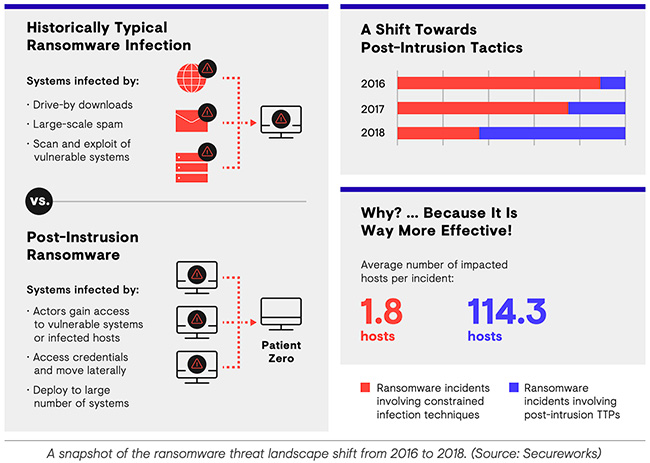Is poor cyber hygiene crippling your security program?
Cybercriminals are targeting vulnerabilities created by the pandemic-driven worldwide transition to remote work, according to Secureworks.

The report is based on hundreds of incidents the company’s IR team has responded to since the start of the pandemic.
Threat level is unchanged
While initial news reports predicted a sharp uptick in cyber threats after the pandemic took hold, data on confirmed security incidents and genuine threats to customers show the threat level is largely unchanged. Instead, major changes in organizational and IT infrastructure to support remote work created new vulnerabilities for threat actors to exploit.
The sudden switch to remote work and increased use of cloud services and personal devices significantly expanded the attack surface for many organizations. Facing an urgent need for business continuity, many companies did not have time to put all the necessary protocols, processes and controls in place, making it difficult for security teams to respond to incidents.
Threat actors—including nation-states and financially-motivated cyber criminals—are exploiting these vulnerabilities with malware, phishing, and other social engineering tactics to take advantage of victims for their own gain. One in four attacks are now ransomware related—up from 1 in 10 in 2018—and new COVID-19 phishing attacks include stimulus check fraud.
Additionally, healthcare, pharmaceutical and government organizations and information related to vaccines and pandemic response are attack targets.
The issue with dispersed workforces
Barry Hensley, Chief Threat Intelligence Officer, Secureworks said: “Against a continuing threat of enterprise-wide disruption from ransomware, business email compromise and nation-state intrusions, security teams have faced growing challenges including increasingly dispersed workforces, issues arising from the rapid implementation of remote working with insufficient consideration to security implications, and the inevitable reduced focus on security from businesses adjusting to a changing world.”